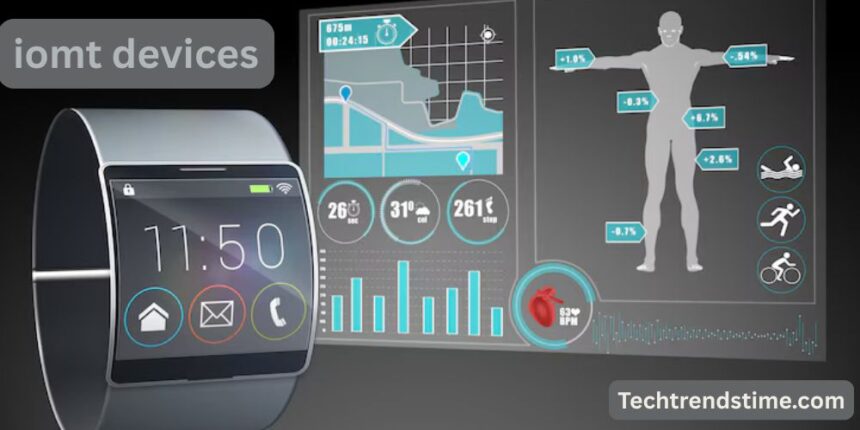Welcome to the world of iomt devices — the Internet of Medical Things. IoMT is a game-changer, blending smart medical devices with internet connectivity, cloud platforms, and data analytics to make healthcare smarter, faster, and more efficient. Imagine a world where your smartwatch warns you of an irregular heartbeat before you even notice symptoms or where your insulin levels are automatically monitored and adjusted by a small device under your skin. It’s not just some fancy tech buzzword — it’s already reshaping how patients and providers interact.
What Is IoMT?
At its core, IoMT refers to a network of medical devices and applications that connect to healthcare IT systems via online networks. These devices collect, analyze, and transmit health data in real-time, improving care delivery and enabling remote health monitoring. From stethoscopes and X-rays to robotic surgery and virtual consultations — medicine has always leaned into innovation. IoMT is the natural next step, combining advances in wearable tech, cloud computing, AI, and mobile health to deliver care that’s not just reactive, but proactive.
Components of IoMT Ecosystem
These are the heart of the IoMT network — literally and figuratively. Think Fitbit, Apple Watch, or Garmin. These devices track heart rate, oxygen levels, sleep patterns, and activity levels. Some even have ECG monitoring features that can alert users to cardiac anomalies instantly. Pacemakers, defibrillators, glucose monitors — these aren’t your average implants. They’re smart, connected, and capable of transmitting vital data directly to healthcare professionals. From blood pressure cuffs to oxygen saturation monitors, these devices let patients manage chronic conditions from the comfort of home while staying connected to their doctors.
Connectivity and Networks
You can’t have IoMT without internet. These technologies act like the invisible threads linking devices together. 5G, in particular, is enabling real-time video, faster data transmission, and improved reliability in remote care setups. All that data needs a home — and the cloud delivers. Combined with big data analytics, cloud platforms process massive streams of patient information to find patterns, detect risks, and generate actionable insights.
Mobile Apps and Healthcare Platforms
Patients interact with IoMT devices via user-friendly apps. These apps sync data, allow users to track progress, set reminders, and sometimes even consult doctors via telehealth features. No more waiting for symptoms to show. IoMT allows for continuous health tracking, making early detection possible and potentially life-saving. By catching warning signs early, IoMT helps doctors intervene before conditions worsen. It’s like having a medical early-warning system in your pocket.
Enhanced Patient Engagement
With data at their fingertips, patients become more aware and involved in their health, leading to better outcomes and lifestyle changes. Fewer hospital visits, shorter stays, and less reliance on emergency care all translate into significant savings for both patients and providers. Especially post-pandemic, remote monitoring tools have become vital. Doctors can now track patient recovery, adjust medications, and consult — all without the patient leaving their home.
Applications of IoMT in Healthcare
Continuous glucose monitors (CGMs) and smart heart monitors help patients manage these conditions daily. Alerts and insights make it easier to avoid complications. IoMT devices can track vital signs, mobility, and healing progress, alerting doctors if anything’s off — minimizing the risk of post-op complications. Smart pill dispensers, fall detection systems, and remote monitoring devices enable seniors to live independently while still being safe and monitored.
Mental Health and Cognitive Monitoring
Mood tracking apps, wearable EEG headsets, and other smart tools help track behavioral patterns, stress levels, and even signs of depression or dementia. Connected ambulances equipped with IoMT devices can send patient data to ER teams in real time, helping them prepare even before the patient arrives. With so much personal data floating around, security is a big concern. IoMT devices are vulnerable to cyberattacks if not properly secured.
HIPAA and Compliance Considerations
Healthcare providers and manufacturers must comply with HIPAA and other data protection regulations. That means secure encryption, access controls, and audit trails. Using end-to-end encryption, secure firmware updates, strong authentication protocols, and regular security audits can keep IoMT ecosystems safe. Not all hospitals or homes have the bandwidth or network infrastructure to support a full IoMT rollout. That’s a barrier for many rural or underserved areas.
Interoperability Between Devices
Different brands, platforms, and systems need to talk to each other — and that doesn’t always happen smoothly. Lack of standardization is a major issue. Doctors, nurses, and staff need training to use, interpret, and trust these devices. Without buy-in from medical professionals, even the best tech can fall flat. Imagine devices that not only collect data but predict illnesses, suggest treatments, or even notify you of a brewing infection days before it hits. That’s where AI comes in.
Personalized and Predictive Medicine
With detailed data collected over time, doctors can create treatment plans tailored to each patient’s unique biology and habits. Blockchain tech could offer tamper-proof records, secure sharing between institutions, and complete transparency for patients.
FAQs About iomt devices
What are examples of IoMT devices?
Common examples include smartwatches, glucose monitors, wearable ECGs, smart pill dispensers, and connected inhalers.
How is IoMT different from IoT?
IoMT is a specialized subset of IoT (Internet of Things) focused on healthcare and medical applications.
Is IoMT safe and secure?
Yes — when proper data protection protocols like encryption and secure networks are in place. However, like all tech, it must be regularly updated and maintained.
How do IoMT devices help doctors?
They provide real-time patient data, enable early diagnosis, support remote monitoring, and help personalize treatment plans.
What is the future scope of IoMT?
IoMT is expected to integrate with AI, expand into personalized medicine, and even leverage blockchain for secure data handling — making it central to the future of healthcare.
Conclusion
IoMT devices are not just fancy gadgets — they’re transforming how we experience healthcare. From chronic disease management to remote care, these smart tools offer faster, safer, and more personalized treatment. Sure, there are challenges, but the future looks bright — and connected.


